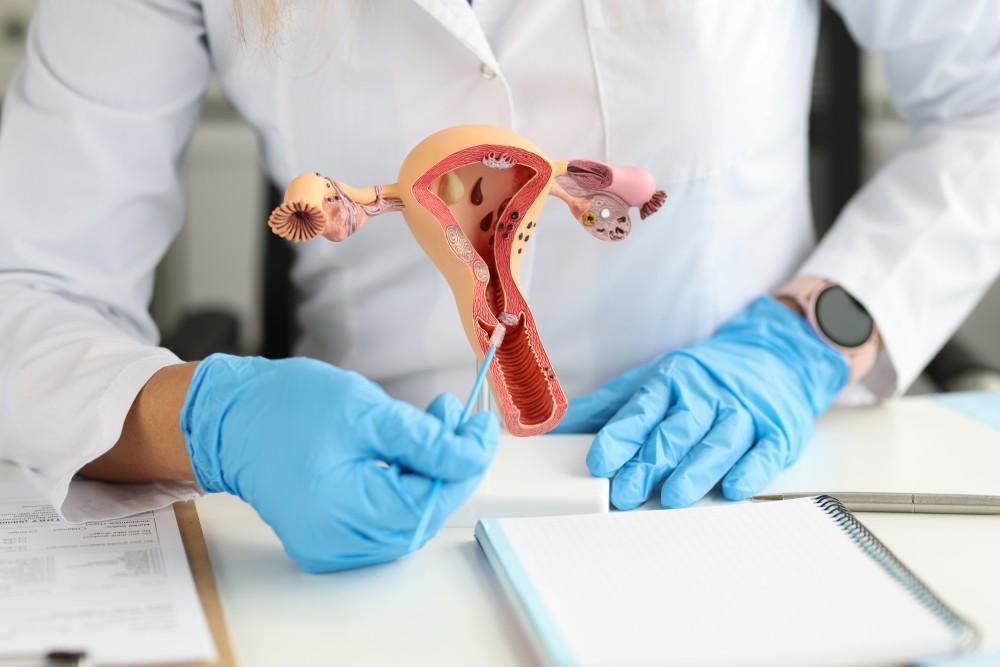Vagina • Pelvic Organ Prolapse: Navigating the Path to Women’s Health
Introduction
In the intricate landscape of women’s health, understanding the complexities of the vagina is crucial. One condition that warrants attention is pelvic organ prolapse. This article explores the nuances of this issue, offering insights into its causes, prevention, and coping strategies.
Understanding the Vagina
Anatomy of the Vagina
The vagina, a muscular tube connecting the uterus to the external genitals, plays a vital role in reproduction and sexual health. A comprehension of its anatomy is fundamental to addressing health concerns effectively.
Normal Functionality
Before delving into pelvic organ prolapse, it’s essential to grasp the normal functionality of the vagina. Understanding the baseline helps in recognizing deviations from the norm.

Pelvic Organ Prolapse Explained
Definition and Causes
Pelvic organ prolapse occurs when the pelvic floor muscles weaken, leading to the descent of pelvic organs such as the bladder, uterus, or rectum. Childbirth, aging, and connective tissue disorders are common contributors.
Types of Pelvic Organ Prolapse
Not all prolapses are the same. This section explores the different types, shedding light on the specific organs affected and the varying degrees of severity.
Symptoms and Warning Signs
Recognizing the symptoms early is crucial for prompt intervention. From discomfort to changes in bowel habits, understanding the warning signs aids in seeking timely medical attention.
Risk Factors
Age and Hormonal Changes
As age advances, hormonal shifts can impact the strength of pelvic floor muscles. This section delves into how age and hormonal changes contribute to the risk of pelvic organ prolapse.
Childbirth and Pregnancy
The miraculous journey of childbirth can take a toll on the pelvic floor. Exploring the connection between pregnancy, childbirth, and prolapse provides valuable insights.
Connective Tissue Disorders
Certain medical conditions affecting connective tissues can elevate the risk of pelvic organ prolapse. Unraveling this aspect emphasizes the importance of holistic healthcare.
Prevention and Lifestyle Tips
Pelvic Floor Exercises
Proactive measures include pelvic floor exercises that strengthen the muscles supporting pelvic organs. Simple yet effective, these exercises can be incorporated into daily routines.
Maintaining a Healthy Weight
Weight management is a key factor in preventing pelvic organ prolapse. This section elucidates how maintaining a healthy weight contributes to overall pelvic health.
Regular Medical Check-ups
Regular check-ups empower individuals with knowledge about their pelvic health. Early detection of predisposing factors enables proactive intervention.
Treatment Options
Non-Surgical Approaches
From physical therapy to lifestyle adjustments, non-surgical interventions play a pivotal role. This section explores conservative approaches to managing pelvic organ prolapse.
Surgical Interventions
In cases where non-surgical methods prove insufficient, surgical options become crucial. Understanding the available procedures and their implications is essential for informed decision-making.
Coping Strategies
Emotional and Psychological Impact
Beyond the physical aspects, pelvic organ prolapse can have emotional and psychological repercussions. This section addresses the importance of mental well-being in the journey to recovery.
Support Networks
Building a support network is integral to navigating the challenges of pelvic organ prolapse. Connecting with others who share similar experiences fosters resilience and empowerment.
Living with Pelvic Organ Prolapse
Lifestyle Adjustments
Adapting to life with pelvic organ prolapse involves making lifestyle adjustments. Practical tips for everyday living enhance the quality of life for individuals managing this condition.
Sexual Health Considerations
Open conversations about sexual health are paramount. This section addresses the impact of pelvic organ prolapse on intimacy and offers guidance for maintaining a healthy sex life.
Seeking Professional Help
Consultation with Healthcare Providers
Timely consultation with healthcare providers is a cornerstone of effective management. Encouraging proactive discussions with medical professionals fosters a collaborative approach to health.
Importance of Timely Intervention
Delaying intervention can exacerbate the consequences of pelvic organ prolapse. Emphasizing the importance of timely action underscores the significance of early diagnosis and treatment.
Breaking the Stigma
Encouraging Open Conversations
Breaking the silence surrounding pelvic organ prolapse is essential for fostering understanding and empathy. Encouraging open conversations dismantles stigma and encourages seeking help without hesitation.
Shifting Cultural Perspectives
Cultural attitudes towards women’s health often impact the experience of pelvic organ prolapse. This section explores the need for cultural shifts to create a supportive environment for individuals dealing with this condition.
Real-Life Stories
Personal Narratives of Coping with Pelvic Organ Prolapse
Real-life stories provide inspiration and solidarity. Sharing personal narratives of resilience and triumph over pelvic organ prolapse sheds light on the human experience.
Inspirational Journeys
Highlighting individuals who have navigated the challenges of pelvic organ prolapse with resilience and grace. Their journeys inspire hope and optimism.
Importance of Self-Care
Mental and Physical Well-Being
Self-care is paramount in the journey of managing pelvic organ prolapse. Balancing mental and physical well-being contributes to an improved quality of life.
Holistic Approaches to Health
A holistic approach to health encompasses various aspects of well-being. This section advocates for integrating holistic practices into daily life to support overall health.
FAQs
What causes pelvic organ prolapse?
Pelvic organ prolapse is primarily caused by weakened pelvic floor muscles, often triggered by factors like childbirth, aging, and connective tissue disorders.
Can pelvic floor exercises prevent prolapse?
Yes, engaging in regular pelvic floor exercises can strengthen the muscles supporting pelvic organs, reducing the risk of prolapse.
Is surgery the only option for treatment?
No, non-surgical approaches such as physical therapy and lifestyle adjustments are viable options. Surgery is considered when conservative methods are insufficient.
How does age impact the risk of pelvic organ prolapse?
As age advances, hormonal changes and muscle weakening increase the risk of pelvic organ prolapse.
Are there support groups for individuals with pelvic organ prolapse?
Yes, joining support groups provides a valuable network for sharing experiences and coping strategies.
Conclusion
In navigating the realm of women’s health, understanding and addressing pelvic organ prolapse is pivotal. This article has explored the intricacies of the condition, providing insights into prevention, treatment, and the importance of open conversations. Remember, seeking help is a sign of strength, and the journey to pelvic health is a collective effort.



